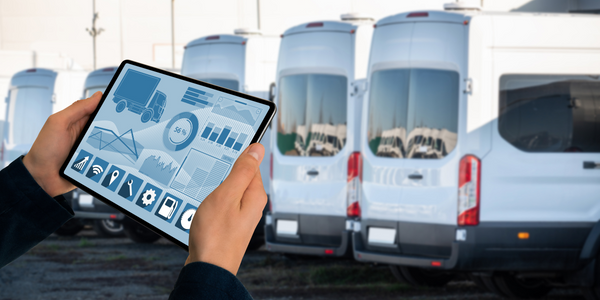For Lufthansa Systems, Customizing In-Flight Connectivity and Entertainment Systems for Its Award-winning BoardConnect Solution Depends on Stateful Containers
Customer Company Size
Large Corporate
Region
- Europe
Country
- Germany
Product
- Portworx PX-Enterprise
- Lufthansa Systems’ BoardConnect
- Lufthansa Systems’ Content Management System (CMS)
Tech Stack
- Docker
- Microservices
- Docker Swarm
- Consul-backed service discovery
Implementation Scale
- Enterprise-wide Deployment
Impact Metrics
- Productivity Improvements
- Cost Savings
Technology Category
- Infrastructure as a Service (IaaS) - Cloud Computing
Applicable Functions
- Product Research & Development
- Discrete Manufacturing
Use Cases
- Predictive Maintenance
- Fleet Management
Services
- Cloud Planning, Design & Implementation Services
- System Integration
About The Customer
Lufthansa Systems is a subsidiary of Europe’s largest airline, Lufthansa. The company is one of the world’s leading providers of IT services in the airline industry. It offers its more than 300 airline customers an extensive range of successful and, in many cases, market-leading products covering all of an airline’s business processes – in the cockpit, in the cabin, and on the ground. Lufthansa Systems’ BoardConnect product powers in-flight entertainment, infotainment, and connectivity for millions of airline passengers. The product is designed with microservices in mind, and it runs in Docker Swarm environments with Consul-backed service discovery. The company maintains a large number of services that persist to regular block storage.
The Challenge
Lufthansa Systems, a subsidiary of Europe’s largest airline, provides IT services to the airline industry. Its BoardConnect product powers in-flight entertainment and connectivity for millions of airline passengers. The product requires a robust and scalable IT infrastructure that can meet customer demands for flexibility, robustness, modularity, and ease of use. As the company increasingly built its infrastructure around microservices and containerization, it identified a missing link – data persistence. The company needed a solution that would allow data persistence to catch up to the flexibility, ease of use, and speed that they needed to achieve in a containerized environment. The company also needed a solution that would allow it to auto-instantiate CMS environments on developer-committed projects and manage customers’ individual CMS production instances.
The Solution
Lufthansa Systems found Portworx PX-Enterprise to be a natural fit for its demands. The solution is free of cloud, use case, and vendor constraints, and is fast and transparent for traditional, cloud native, and third-party applications. Portworx PX-Enterprise allows Lufthansa Systems to spawn full-blown CMS environments in a matter of minutes, without requiring manual intervention. For production, it allows operations to move CMS environments around in the cluster, and the corresponding data follows along transparently. The solution operates transparently in the background, and administrative tasks are easy to execute through the provided Lighthouse UI, or CLI when necessary. Upgrades are straightforward, and metrics from the storage subsystem are available in a standard JSON format.
Operational Impact
Quantitative Benefit

Case Study missing?
Start adding your own!
Register with your work email and create a new case study profile for your business.
Related Case Studies.

Case Study
Remote Monitoring & Predictive Maintenance App for a Solar Energy System
The maintenance & tracking of various modules was an overhead for the customer due to the huge labor costs involved. Being an advanced solar solutions provider, they wanted to ensure early detection of issues and provide the best-in-class customer experience. Hence they wanted to automate the whole process.

Case Study
Predictive Maintenance for Industrial Chillers
For global leaders in the industrial chiller manufacturing, reliability of the entire production process is of the utmost importance. Chillers are refrigeration systems that produce ice water to provide cooling for a process or industrial application. One of those leaders sought a way to respond to asset performance issues, even before they occur. The intelligence to guarantee maximum reliability of cooling devices is embedded (pre-alarming). A pre-alarming phase means that the cooling device still works, but symptoms may appear, telling manufacturers that a failure is likely to occur in the near future. Chillers who are not internet connected at that moment, provide little insight in this pre-alarming phase.

Case Study
Aircraft Predictive Maintenance and Workflow Optimization
First, aircraft manufacturer have trouble monitoring the health of aircraft systems with health prognostics and deliver predictive maintenance insights. Second, aircraft manufacturer wants a solution that can provide an in-context advisory and align job assignments to match technician experience and expertise.

Case Study
Integral Plant Maintenance
Mercedes-Benz and his partner GAZ chose Siemens to be its maintenance partner at a new engine plant in Yaroslavl, Russia. The new plant offers a capacity to manufacture diesel engines for the Russian market, for locally produced Sprinter Classic. In addition to engines for the local market, the Yaroslavl plant will also produce spare parts. Mercedes-Benz Russia and his partner needed a service partner in order to ensure the operation of these lines in a maintenance partnership arrangement. The challenges included coordinating the entire maintenance management operation, in particular inspections, corrective and predictive maintenance activities, and the optimizing spare parts management. Siemens developed a customized maintenance solution that includes all electronic and mechanical maintenance activities (Integral Plant Maintenance).

Case Study
IoT-based Fleet Intelligence Innovation
Speed to market is precious for DRVR, a rapidly growing start-up company. With a business model dependent on reliable mobile data, managers were spending their lives trying to negotiate data roaming deals with mobile network operators in different countries. And, even then, service quality was a constant concern.



